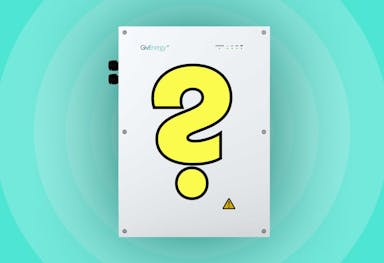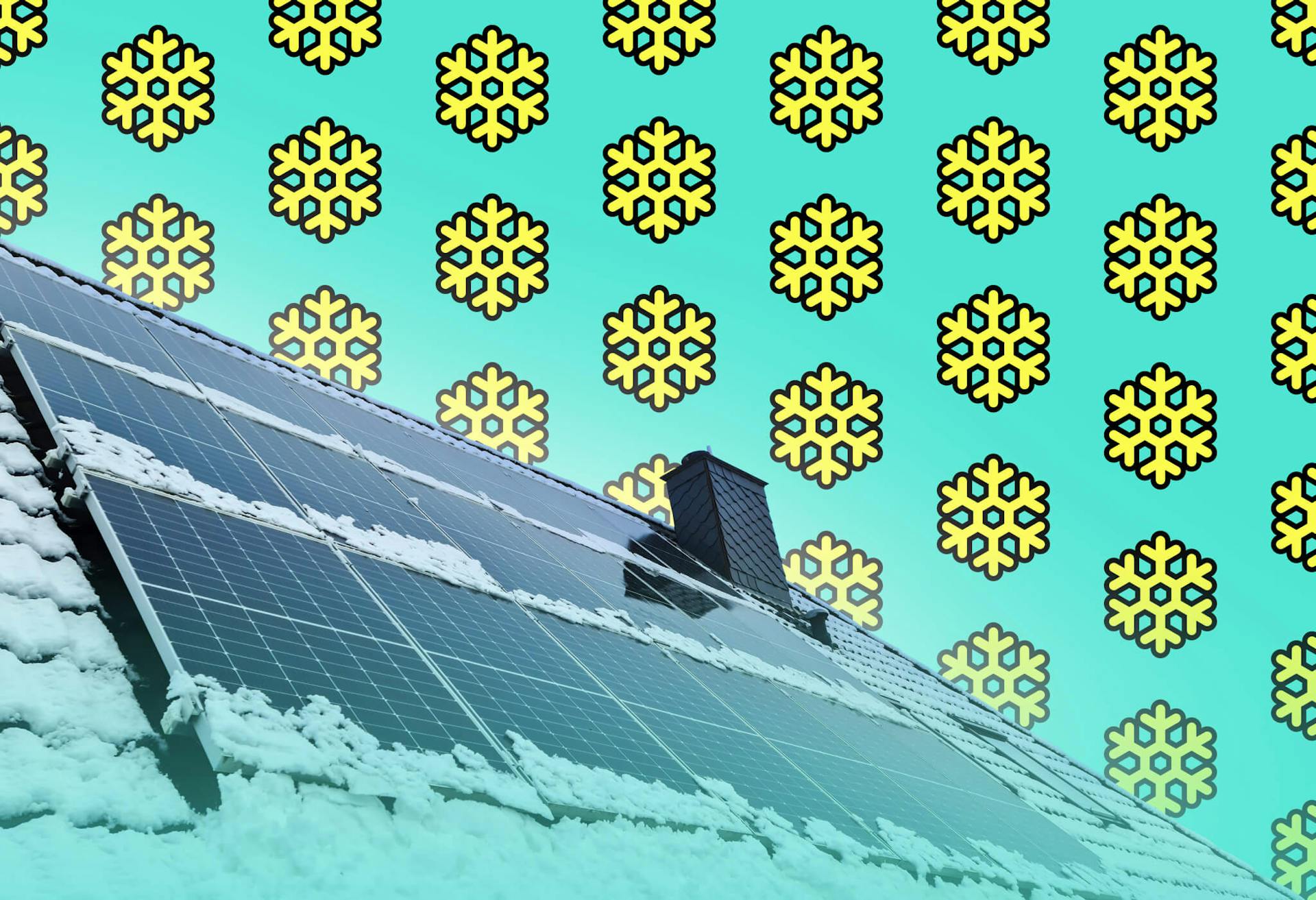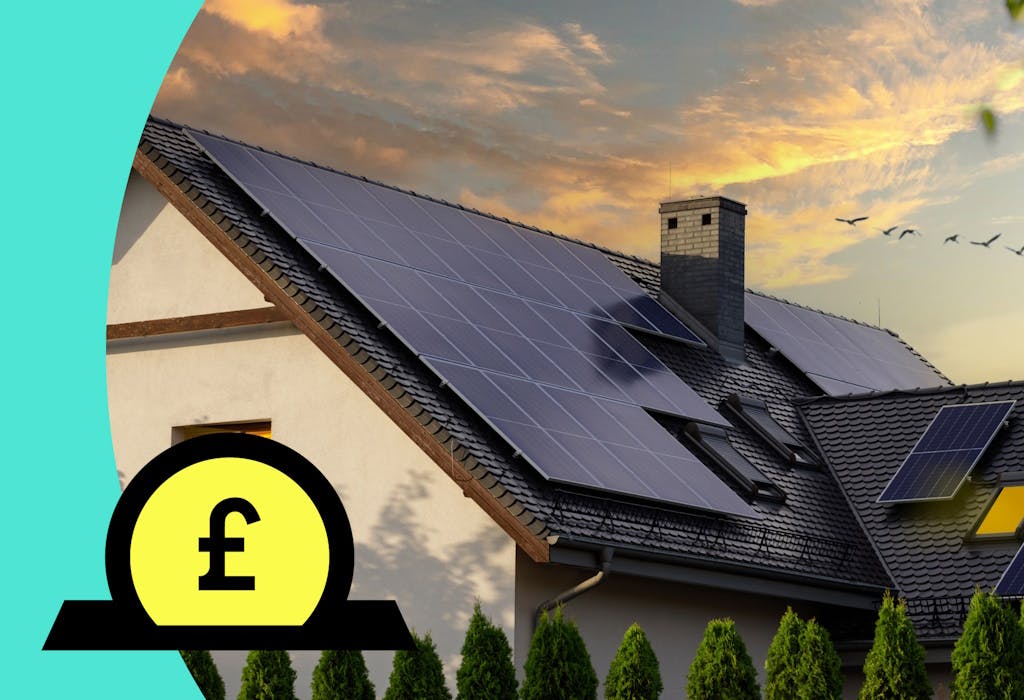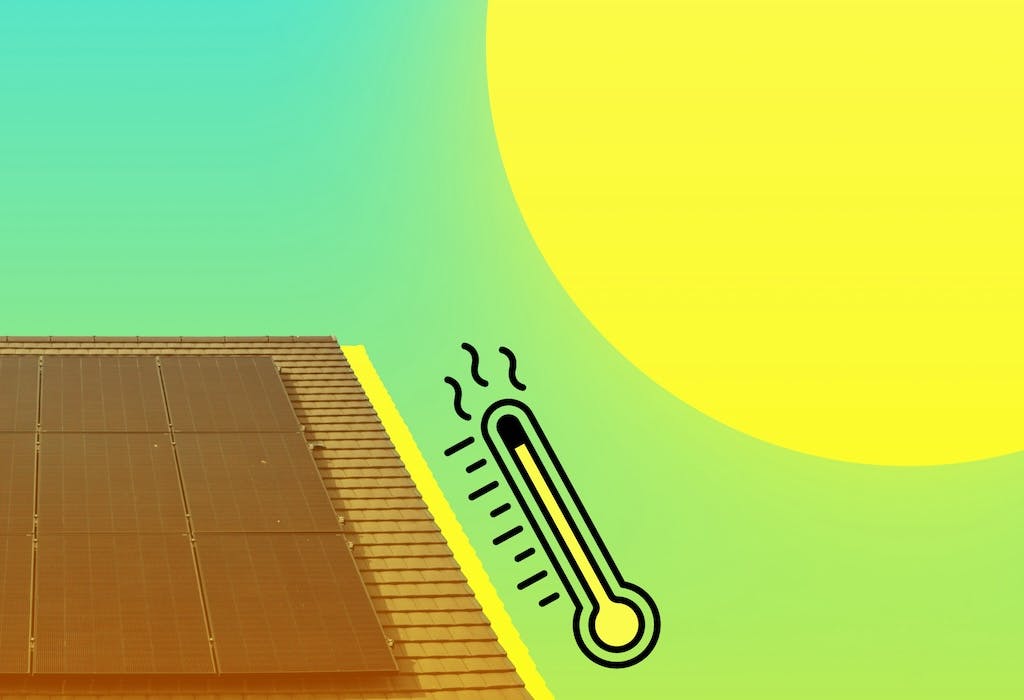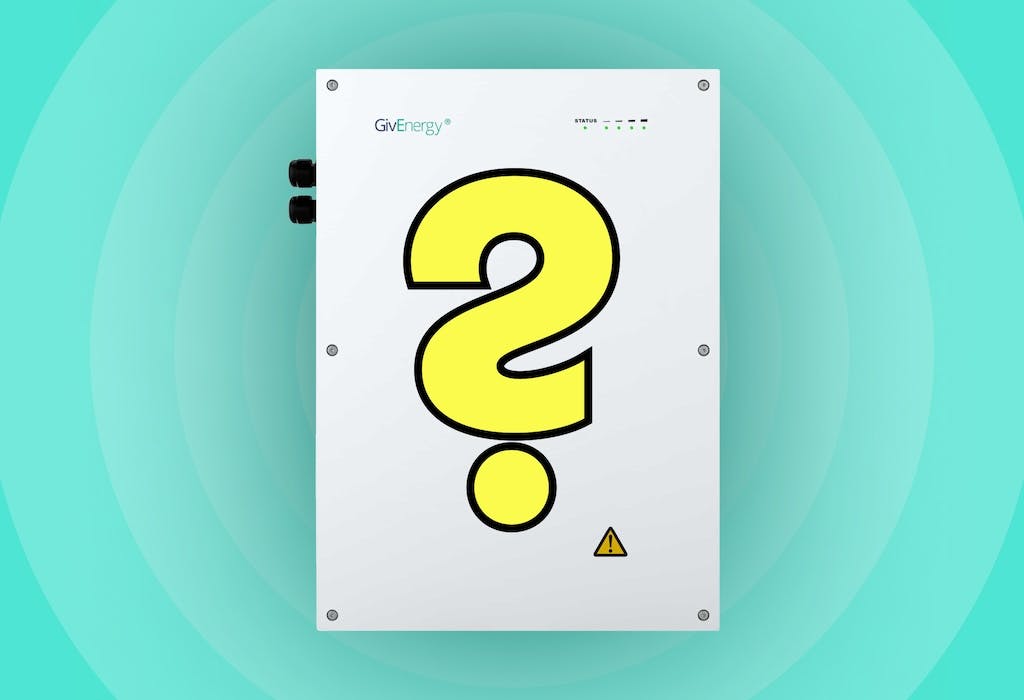- Solar advice hub
- How-solar-works
- Do solar panels work at night?
Do solar panels work at night?
We explore whether solar panels can produce electricity at night, and how you can make the most of your solar panels after sunset.


Why you can trust our content
We know that the solar industry is full of misinformation, but we only use reliable sources, including:
- Our experienced solar experts, installers and system designers
- Our own database of solar & battery system designs
- Authoritative bodies like MCS and the UK government



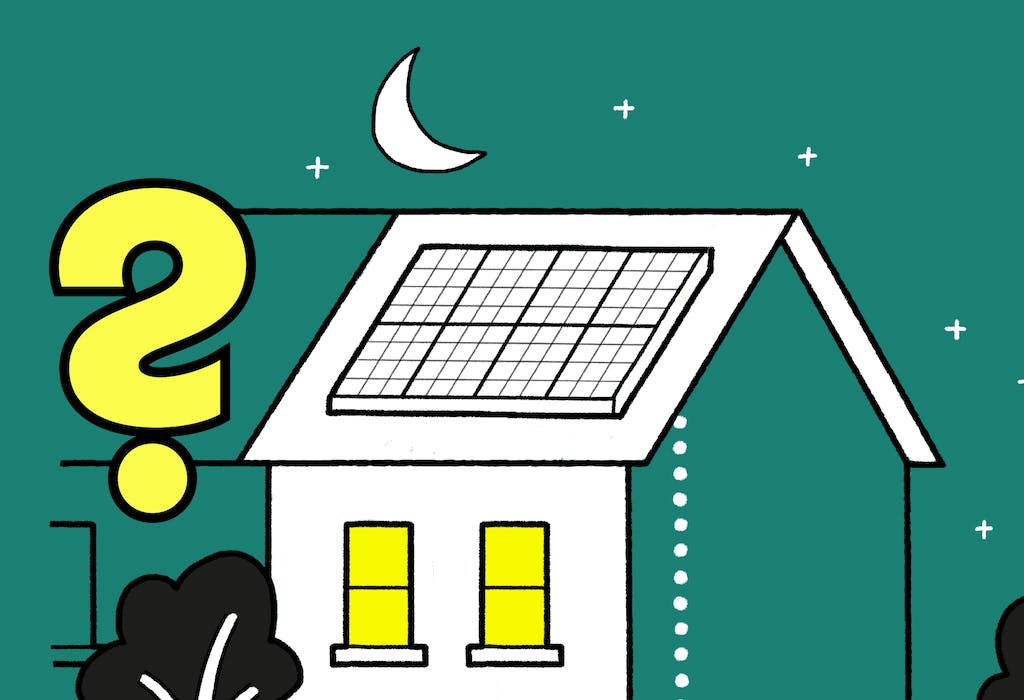
Calculate savings
What kind of home do you live in?
Calculate savings
What kind of home do you live in?
Solar panels at night: at a glance
Outside of being one of the best ways to power your home sustainably, solar panels are limited by one key factor: they have a relatively restricted time window in which they can work.
In this article, we'll explore why solar panels aren't equipped to work after dark and how you can still make the most of your solar at night with a battery.
If you’re wondering how much a solar & battery system could save you, answer a few quick questions below and we’ll provide you with an estimate.
Find out how much you can save
What kind of home do you live in?
Can solar panels produce energy overnight?
Despite their advanced technology, modern solar photovoltaic (PV) panels cannot produce energy overnight. They rely on natural light to generate electricity, so they only work in the daytime.
As a result, if you plan to make maximum use of your solar panels (and you don’t have a battery), it’s wise to shift most of your electricity usage to daylight hours.
You can set many appliances - like your washing machine or dishwasher - on a timer, so they operate when your solar panels are generating the most electricity (which is usually around midday).
Automating appliances means your solar panels will cover a great proportion of your electricity needs, saving you from resorting to more expensive grid electricity in the evening.
That said, there are exciting changes on the horizon. Researchers at the University of New South Wales (UNSW) in Australia are developing a new technology that could generate electricity at night - but more on this further down.
What about moonlight?
Solar panels only need ambient light to function, which is why they still work well on cloudy days and during grey winters. So in theory, moonlight (i.e. reflected UV light from the sun) should technically be able to trigger the photovoltaic effect.
However, the amount of light reflected by the moon is tiny - only about 0.0002% of the intensity of direct sunlight . This means that while solar panels can technically use moonlight to produce some electricity, it’s barely a hint.
It’s also not even enough electricity to trigger most solar inverters' startup voltage, which is the minimum amount of power required to get an inverter working. And without an inverter, your solar panels’ DC electricity can’t be converted into AC electricity.
So the wisp of electricity produced by solar panels under the moonlight doesn’t get converted into a usable form, and is lost.
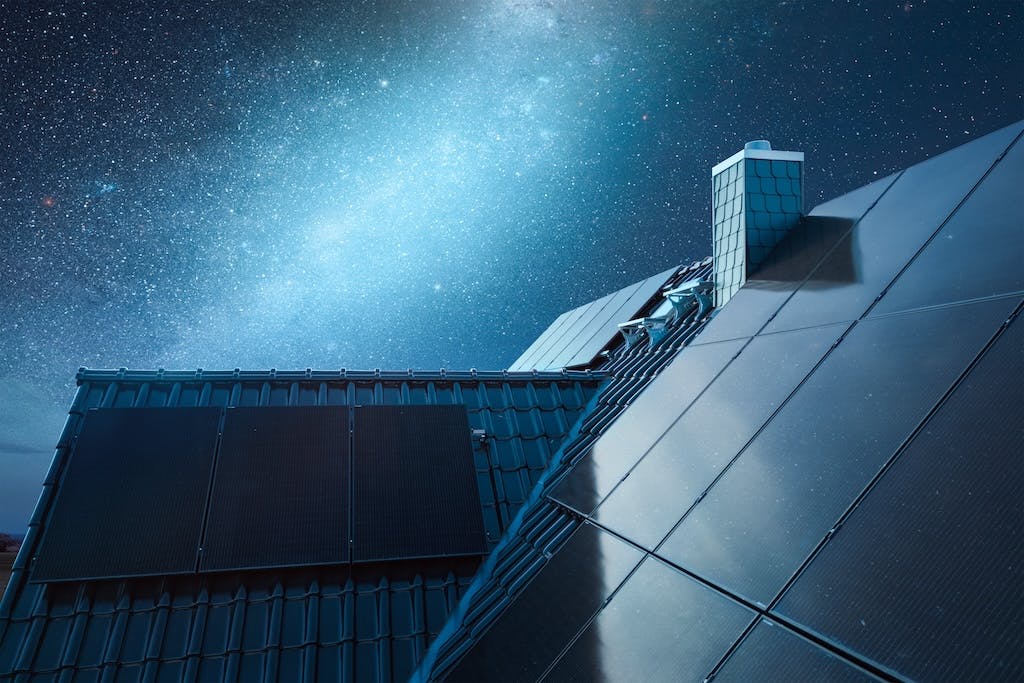
Can you use solar power at night?
As we've established, solar panels can only generate electricity when there's daylight. However, you can still use your solar panels’ electricity after sunset - just add a storage battery.
Without a battery, if your home doesn’t use the electricity your solar panels produce in the instant that it’s generated, it will automatically be exported to the grid (and you’ll get paid for it via a solar export tariff). But chuck a battery into the mix, you can store up your excess electricity for later use.
Having a solar battery significantly increases your energy independence and boosts your savings. In fact, with a solar & battery system in the UK, you can cut your electricity bill by 86%, on average.
This figure is based on a sample of over 150 systems installed by Sunsave across England and Wales in 2024. The average system is 6.1 kilowatt-peak (kWp), with 54% of solar electricity used at home and 46% exported to the grid.
That said, during the darker winter months, you’ll still need to rely on the grid for some of your overnight electricity needs - even with a battery. In the UK, only about 11% of a solar panel’s annual output is generated in the winter (compared to almost 40% in summer).
Overnight battery usage during summer
During a UK summer, a solar battery can potentially provide all the power a house needs between sunset and sunrise.
For instance, consider a 5.2 kilowatt-hour (kWh) battery paired with a 4.3kWp solar panel system in a household using 2,700kWh of electricity per year. This battery would probably be about 50% full at the point of sunrise, but will then recharge completely by around 6am.
Throughout the morning and afternoon, the household can draw enough electricity directly from the solar panels, allowing the battery to remain fully charged until evening, when energy consumption typically increases as everyone arrives home.
As the daylight hours draw to a close, the battery becomes essential, discharging approximately 33% of its stored energy (around 1.7kWh) to power all the evening activities, including heavy use of kitchen appliances.
At the end of the evening, the battery will still have around 67% of its charge, which is more than enough to cover the household’s minimal overnight electricity usage. The battery will then be ready to charge up again the next morning, and follow the same process.
To learn about how a battery usually behaves in the winter, check out our guide to whether storage batteries are worth it.
A new 'night-time' solar technology
In 2022, an award-winning team of researchers from Australia's University of New South Wales (UNSW) developed a new technology capable of generating electricity at night.
The researchers successfully converted infrared heat into electricity using a thermoradiative diode - a semiconductor device constructed of materials common in night-vision goggles - which replicates the Earth’s natural nocturnal cooling process.
Associate Professor Ned Ekins-Daukes explains that the process still relies on solar power, which warms up the Earth during the day with sunlight. At night, this heat energy escapes into space as infrared light, and the diode can harvest this energy.
"Using thermal imaging cameras you can see how much radiation there is at night, but just in the infrared rather than the visible wavelengths. What we have done is make a device that can generate electrical power from the emission of infrared thermal radiation," says Ekins-Daukes.
Although the current power output is relatively small, at around 100,000 times less than a standard solar panel, the researchers are optimistic about improving the technology.
Healthcare applications of this technology could mean bionic devices, like artificial hearts, which use body heat as a power source instead of batteries - an amazing future possibility.
Research paper co-author Dr Michael Nielsen remarked: “Even if the commercialisation of these technologies is still a way down the road, being at the very beginning of an evolving idea is such an exciting place to be as a researcher.”
It's still in experimental stages and not yet available to the public, but it represents a promising step towards round-the-clock solar generation.
The problem with solar farms on dark days
Solar panels' poorer performance in low-light conditions points to a larger problem facing the UK’s ambitions for Net Zero.
Naturally, large-scale solar farms struggle to produce much electricity when it’s dark and gloomy - such as during 'dunkelflaute' events, where periods of low sunlight and low wind simultaneously decimate the output of solar farms and wind farms.
To tackle this, we need a major increase in our battery storage capabilities, so that we can save up our excess renewable energy for these dunkelflaute events.
The government plans to expand the UK's energy storage capacity to 30GW by 2030 (a considerable increase from the current 4.7GW) using technologies such as battery storage, pumped storage, and liquid air energy storage.
And, thankfully, progress on that has already started. In January 2025, Doncaster Council gave a Yorkshire-based battery storage project the green light, and it's set to become the largest in the UK at 1.4GW of capacity.
However, storage alone isn’t enough. The UK also needs to make electricity demand more flexible to help balance supply and demand in all conditions. This is achievable through demand flexibility services and decentralised storage from both electric vehicles (EVs) and household batteries.
Next steps
Solar panels are a marvellous piece of human ingenuity, but unfortunately they can’t generate electricity at night (yet). However, by adding a battery to your solar PV system, you’re able to use your panels’ electricity once the sun has set.
There are also ongoing developments that could eventually pave the way for 24/7 electricity generation from solar energy, thanks to the researchers at UNSW. Although it could be a seriously long time until this technology is going up on rooftops - residential or otherwise.
If you’d like to find out how much a solar & battery system could save you, simply click the button below, provide a few quick details, and we’ll provide you with an estimate.
Find out how much you can save
What kind of home do you live in?
FAQs
Related articles

Written byMelody Abeni
Based in London, Melody is a specialist green technology writer who has been covering sustainability, climate action and ESG for the past five years, after gathering operational experience in green investing and financial services. She has written for various industry publications, including renewable technology advisor The Eco Experts, and she holds a Master’s degree in law from Birkbeck University.
